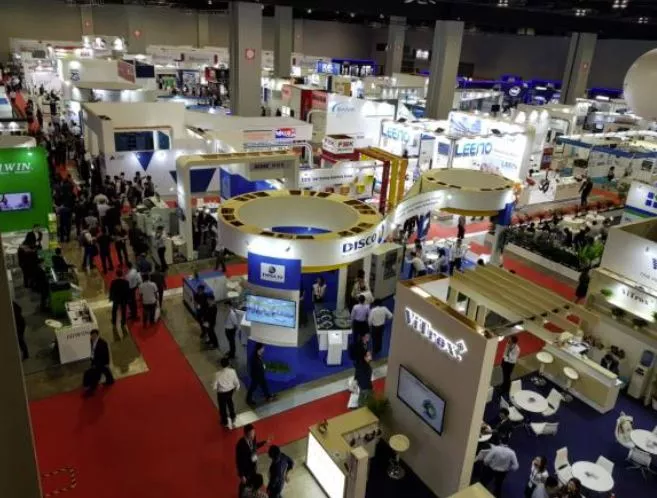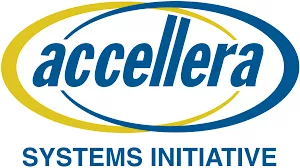
Industry groups bring value to all players regardless of size or position in the market.
A common question I get when talking to companies about joining SEMI and the Electronic System Alliance is “what value is in it for my company?” Questions like this are reasonable but reflect transactional thinking about member ROI on their annual dues. The challenge for industry organizations is to clearly communicate the much broader value that membership delivers – a combination of intangible and tangible benefits.
Intangible benefits come into play when one considers “strength in numbers.” Given our current global geopolitical issues and challenges, industry associations serve a vital role in amplifying the collective voice of its members for much greater impact than individual companies going it alone. Rapidly evolving trade and export rules and restrictions are a great example of how an industry voice benefits all players, big and small, by communicating a shared position to policymakers.
 A rough analogy are the similarities between a homeowner’s association (HOA) and a semiconductor industry organization. The HOA’s value is to protect and enhance the values of the properties in the organization for the benefit of all homeowners. Similarly, an industry organization is looking out for the needs of the semiconductor industry as a whole.
A rough analogy are the similarities between a homeowner’s association (HOA) and a semiconductor industry organization. The HOA’s value is to protect and enhance the values of the properties in the organization for the benefit of all homeowners. Similarly, an industry organization is looking out for the needs of the semiconductor industry as a whole.
As you know, SEMI represents the interests of the semiconductor industry’s design, manufacturing and supply chain throughout the global electronics industry. We focus on advocating for policies that promote growth and reduce business risks. This might include a wide variety of topics such as addressing taxes, trade, legislation, technology, environment, health and safety (EHS) and workforce development.
By joining an industry organization, companies and their executives demonstrate their commitment to enhancing the value of the industry. They become more connected to their ecosystem, including industry peers, customers and suppliers via networking events and at technical conferences and high-level summits. Company sales teams often support industry group membership because the events they host open doors to potential customers and partners and may even result in collaborations and new business.
 Industry events bring together industry executives and staff, customers, venture capitalists, journalists analysts, academics and students. Member companies can participate in many ways to showcase their products, technologies and brand. This could include everything from being a program speaker or keynote, to exhibiting products and even hosting the event or portions of the event (such as coffee breaks, lunches, dinners and receptions). This gives member companies a more personalized way to demonstrate industry leadership than is possible through a website or webinars.
Industry events bring together industry executives and staff, customers, venture capitalists, journalists analysts, academics and students. Member companies can participate in many ways to showcase their products, technologies and brand. This could include everything from being a program speaker or keynote, to exhibiting products and even hosting the event or portions of the event (such as coffee breaks, lunches, dinners and receptions). This gives member companies a more personalized way to demonstrate industry leadership than is possible through a website or webinars.
Industry organizations can also help raise visibility and brand awareness for startups and small and emerging companies that often have limited budgets for brand building. Some organizations offer marketing and public relations advice and may draft news releases announcing the new member company or develop blog posts on the company or with the company as part of the membership benefit program. In addition, most organizations have marketing groups that help promote member companies through social media, blogs and press releases.
 Global reach and exposure is another benefit offered by some industry organization such as SEMI. The semiconductor supply chain is dispersed across the globe, yet most individual companies are based in specific locations. Participating in an industry organization that is connected across all geographies gives members the opportunity to expand their reach, branding and connections to a global audience.
Global reach and exposure is another benefit offered by some industry organization such as SEMI. The semiconductor supply chain is dispersed across the globe, yet most individual companies are based in specific locations. Participating in an industry organization that is connected across all geographies gives members the opportunity to expand their reach, branding and connections to a global audience.
Another benefit of membership at many industry organizations is in standards development. Most industry standards are developed by contributors from across the industry. This offers a great chance for a member company’s engineering group to participate with their peers and make a difference that benefits the industry.
As SEMI President and CEO Ajit Manocha has often said, “Standards are the oxygen of the semiconductor industry.” The semiconductor industry is built on standards that would not be possible without industry organizations, which provide a framework for standards development and ratification, and the volunteers who drive and develop the standards. SEMI, for example, has managed the development process for more than 1,000 standards that are maintained by more than 5,000 volunteer experts representing more than 2,000 companies.
 Many industry organizations also track the industry and develop market research reports, forecasts, and, in some cases, industry roadmaps. CEOs, CFOs, market analysts and business development executives benefit from these reports as they help them plan their strategies, product roadmaps, and budgeting and forecasting. Industry analysts also benefit from subscribing to these reports as important inputs to their own reports about industry performance.
Many industry organizations also track the industry and develop market research reports, forecasts, and, in some cases, industry roadmaps. CEOs, CFOs, market analysts and business development executives benefit from these reports as they help them plan their strategies, product roadmaps, and budgeting and forecasting. Industry analysts also benefit from subscribing to these reports as important inputs to their own reports about industry performance.
Workforce development programs are critical to addressing the global shortage of skilled technical workers. Deloitte predicts that the chip industry will need more than 1 million additional skilled workers by 2030. That’s more than a whopping 100,000 annually. Industry organizations are stepping in with talent development programs and, in one case, a standardized process to identify technical competency and certifications relevant to college-level coursework. They also promote the industry as a great place to build a career and make contributions to industry and the world.
There is no doubt that industry organizations are key to the ongoing success and growth of the semiconductor industry. From intangible benefits that benefit all industry participants to tangible benefits such as brand exposure and awareness and industry connections, membership in at least one industry organization should be part of business strategy for every company across the semiconductor supply chain.
A few examples of industry organizations include:
 SEMI – It is comprised of companies involved in the electronics design and manufacturing supply chain that provide equipment, materials and services for the manufacture of semiconductors, photovoltaic panels, LED and flat panel displays, MEMS, printed and flexible electronics, medical/biological electronics and related micro and nanotechnologies.
SEMI – It is comprised of companies involved in the electronics design and manufacturing supply chain that provide equipment, materials and services for the manufacture of semiconductors, photovoltaic panels, LED and flat panel displays, MEMS, printed and flexible electronics, medical/biological electronics and related micro and nanotechnologies.
 ESD Alliance, a SEMI Technology Community – An international association of companies providing goods and services throughout the semiconductor design ecosystem, it is a forum for addressing technical, marketing, economic and legislative issues affecting the entire industry. ESD Alliance acts as the central voice to communicate and promote the value of semiconductor design as a vital component of the global electronics industry.
ESD Alliance, a SEMI Technology Community – An international association of companies providing goods and services throughout the semiconductor design ecosystem, it is a forum for addressing technical, marketing, economic and legislative issues affecting the entire industry. ESD Alliance acts as the central voice to communicate and promote the value of semiconductor design as a vital component of the global electronics industry.
 Accellera Systems Initiative – An independent not-for-profit organization dedicated to creating, supporting, promoting and advancing system-level design, modeling and verification standards for use by the worldwide electronics industry. Its members support the work of the technical committee to develop technology standards to benefit the worldwide electronics industry.
Accellera Systems Initiative – An independent not-for-profit organization dedicated to creating, supporting, promoting and advancing system-level design, modeling and verification standards for use by the worldwide electronics industry. Its members support the work of the technical committee to develop technology standards to benefit the worldwide electronics industry.
Robert (Bob) Smith is executive director of the ESD Alliance, a SEMI Technology Community.